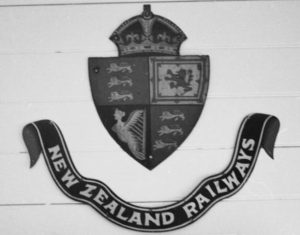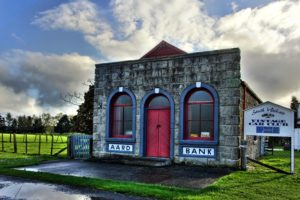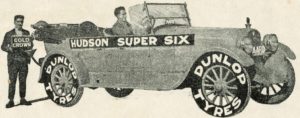1918: AARD
May 14, 2021
By AHNZ
Dot Woodcock and Ben Anderson’s operation should be called “..Aard Motor Services Ltd – ‘Aard’ is the Dutch name for ‘earth’ or ‘world’, but the double ‘A’ ensured it would also appear first in the national WisePostOffice Directiory listings.” – p35 On The Buses in New Zealand, John McCrystal (2007)
“The AARD organisation began to decline in 1928 when many services were purchased by NZ Railways Road Services.” – Pahiatua and district pics old and new.
In the end, the government made it illegal for anyone to compete with them. That made it pretty easy for them to buy up companies like AARD for a song.
Always remember that the Government never create anything, especially not pioneering technological innovation. What they do (as we have also seen with the railways and telegraph and radio and television) is come along after the fact and nationalise the work of others. Then, they re-write history to make it look like they did the work all along.
1926: Nationalisation
“Tourists, Rotoruawards,..count the minutes until they would get a sup of tea (or some other beverage) at Lichfield. Later, on the
completion of the railway right through to the town of Rotorua caused Lichfield (which was in a/pocket) to cease being a railhead station, and Putaruru, some six miles further north, at the bend in the Rotorua line, became the place of refreshment instead. ” – Matamata Record, 1924; Papers Past1931: Transport Licensing Act
“regulated local bus services to ensure that services would not compete with. This further increased acquisitions by NZR of small bus companies”- Ref. Wiki
“following a Royal Commission on road and rail competition in 1930…The Act also regulated aspects such as safety and insurance requirements..” (of course it did)1936: Transport Licensing Act expanded upon
Gave government’s rail an effective monopoly on long-distance freight transport. Makes it easy for NZR to buy up its competition.
After being bypassed on the pathway to Rotorua, little Lichfield didn’t need its hotel or BNZ Bank anymore. But the bank building now became a minor stop for AARD, the motor transport service. Refreshments, minor repairs, re-fuel, get on, get off, exchange mail bags,…that sort of thing. That is why, to this day, the building has ‘AARD’ and ‘BANK’ carved into its stone.
 AARD could take tourists and travelers and mail where trains could not go. And, they could continue to do it when the government-run railway workers went on strike as they were want to do. That is why, in the eyes of The State, it had to go. Not, of course, until the likes of AARD had done all the hard work. They established the possible, figured out the routes, made sure the roads and bridges and maps worked, proved the customer base viable. You know what happens next…
AARD could take tourists and travelers and mail where trains could not go. And, they could continue to do it when the government-run railway workers went on strike as they were want to do. That is why, in the eyes of The State, it had to go. Not, of course, until the likes of AARD had done all the hard work. They established the possible, figured out the routes, made sure the roads and bridges and maps worked, proved the customer base viable. You know what happens next…
In 1926 Minister of Railways, Gordon Coates, started competing with government road transport. The following year, his government increased petrol tax by 25%. The year after that, AARD was nationalised. In the 1930s remaining independent operators competing with the Government were made illegal to run under pretense of their being “properly” insured and sufficiently “safe.” Having decimated the industry, the government was now able to inexpensively nationalise the remaining private enterprise too and create a state monopoly.
—
Image ref. Brian Robinson, Flickr (2012)
Image ref. Coates, Auckland Museum Collections
Image ref. AARD/Bank, Brian Robinson, Flickr (2012)
Image ref. Super Six, AARD Motor Services’ Association (c.1932); Alexander Turnbull Library
 Like Comment Share
Like Comment Share









One thought on "1918: AARD"